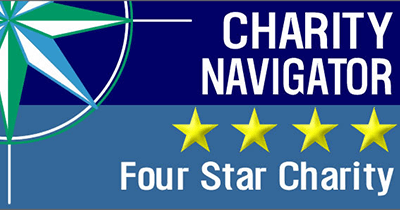
There are lots of poor people all around the world. They do not have enough (financial) resources to lead normal lives and meet basic needs. These people are deprived of access to healthy food, water, electricity, shelter, education, healthcare, etc.
Although the USA is considered one of the richest countries in the world, there are still many poor individuals and families struggling with a lack of adequate resources.
What is Poverty?
Poverty is a condition of being unable to obtain or provide a standard level of food, water and/or shelter or decent housing. What should be understood, though, is that in a lot of cases it is not the fault of these (financially) poor people. A family can fall into poverty for many reasons — death in the family, sudden unemployment, crop failures.
Some believe that all people can easily find a way out of poverty by mere hard work or ambition. However, what statistics show is that people who were born into poverty are more likely to remain poor despite how hard they work and try. If the economic system, i.e. the cycle of poverty is against them, the majority will not be able to find a way to get out of poverty.
Who Lives in Poverty in the USA?
People who make less than the federal government’s poverty threshold. For a family of four, the threshold is about $25,700. How many people exactly? In 2018, 38.1 million people or 11.8 percent lived in poverty in the USA. There are children, seniors, unemployed, minorities, etc. who belong to this group.
Poverty and Social Exclusion
Should people and families who live in poverty be excluded from or helped by society? Although it might seem difficult to comprehend, poverty leads to exclusion. The main thing when considering exclusion is the inability to access what is required for a decent life. When it comes to developed countries like the USA, these people are deprived of what is considered a normal life in these societies:
- The Internet that leads to lack of access to job opportunities, public services, and news
- Decent clothes in order to get a job
- Money for education
- Access to decent and safe housing causing serious health issues, etc.
Two Main Classifications of Poverty – Absolute vs Relative Poverty
Both of these two types of poverty are focused on income and consumption. However, sometimes poverty is not only to do with economics, but it is also connected with society and politics.
What is Absolute Poverty?
This concept measures poverty only in relation to the amount of money necessary to meet basic needs such as food, clothing, shelter, safe drinking water, education, healthcare, etc. In this type of poverty people who are living below the aforementioned poverty threshold are not affected even if the country they live in is economically thriving. In other words, regardless of how rich and successful the US economy is, people living in absolute poverty have no benefits of the economic prosperity of their country.
Absolute poverty, however, does not include a broader quality of life issues or the overall level of inequality in society. What the concept fails to recognize is that individuals also have important social and cultural needs.
What is Relative Poverty?
It is the condition in which people are deprived of the minimum amount of income needed in order to maintain the average standard of living in the society they live in. Thus, although people and households living in relative poverty or relative deprivation, as it is sometimes called, have a certain amount of money, it is still not enough to provide for the basics. However, this type of poverty defines poverty in connection with the economic status of other members of society. This means it changes with the economic growth of the country.
Although people living in this type of poverty do not live in total (absolute) poverty, they still cannot afford the same standard of life as other people in society. This can sometimes refer to the lack of TV, the Internet, clean clothes, decent and safe housing, and education. Although it seems to be less serious than absolute poverty, it is still a category that can be permanent. Some families do not have access to the same standard of living as others do. They find themselves thus confined to low income and unable to break through the barriers.
A Decent and Safe Home Tackles Poverty
A safe home lays the foundation for leading a life of pride, dignity, and opportunity. It also decreases fear of exclusion or neglect. Providing deserving families in need with a roof under their heads is a way to deal with absolute and relative poverty. We can help these families break the vicious cycle of poverty.
Let’s not forget that a decent and safe home leads to improvement in:
- Health – clean, warm and properly constructed homes prevent illnesses and diseases. Insufficient ventilation is the cause of many respiratory diseases. Providing windows and proper ventilation systems reduce the risk of these diseases. In addition, diseases such as cholera or typhoid spread fast due to the lack of proper sanitation.
Children are susceptible to life-threatening diarrhea and intestinal infections. What about mental health? It goes without saying that it is greatly improved when people do not need to concern themselves about their physical health.
- Education and schooling – children who live in unsafe places have lower school attendance and completion rates. Providing a home with adequate lighting and no leaks for these children gives them the opportunity to learn and do their homework. This is how these children progress and grow into responsible, well-educated adults.
- Employment chances – one needs a registered address with access to the Internet in order to find work. A decent home leads to improved health that is key for both obtaining and maintaining a job. In addition, starting a home-based small business is a good way to generate income. A person needs enough space and security in order to be able to set up a business and thus support his/her whole family.
- Safety – a decent home is a shelter from natural disasters such as storms, rain, cold, earthquakes. It also provides safety for the whole community as good housing contributes to thriving school systems and healthy relationships in communities.
- Security – having a door with a lock in a home helps reduce the risk of theft and crime. Safe homes and safe neighborhoods help build social stability and security.
Everyone deserves a chance to enjoy the same standard of living and equal opportunities in order to live their life to their full potential. All families need a safe and secure home where they can unite, thrive and support one another. Many people say that home is where the heart is as this is the place where families grow, love and take care of not only their family members but also their neighbors and the community.
Let’s take an active part in eradicating poverty by providing decent homes and the essential foundation for people to create and lead happy and prosperous lives. Get involved and help families in need have their home and hope.







